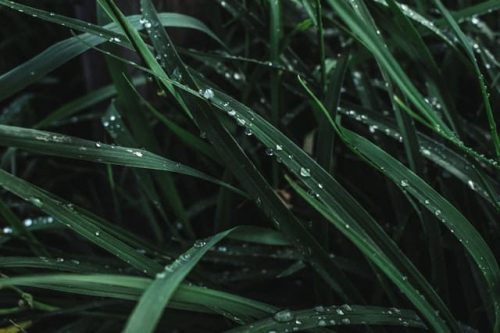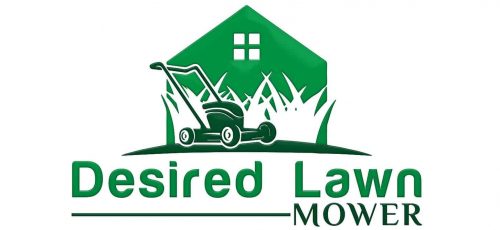Mowing your lawn is an essential way of keeping your property looking pristine. But in order to do that, you need to routinely trim your lawn. However, when the rainy season kicks in, keeping your lawn beautifully manicured becomes a tedious hot mess of a job making many property owners wonder how to tend to a wet lawn. Rain makes your yard a little less ideal for mowing your grass, though there are a dozen of reasons why it’s a bad idea to mow in the rain, here is a complete guide for you to know what’s best in tending to your wet lawn.
Can you mow your lawn in the rain?
Absolutely not when you’re using a residential riding mower. However, it is possible to mow the lawn if you’re using a heavy-duty commercial mower but you must do it with care.
Mowing your lawn in the rain poses plenty of hazards for you as a rider and for your mower. Mowing wet grass leads to your mower acting twice as hard to give your lawn a good clean cut. Furthermore, you are also putting yourself in danger as you mow in wet soil with a heavy zero-turn mower.
Dangers of mowing wet grass
Putting an open machine out under the rain is dangerous for you as the rider and for your mower.
- Overheating engine
Wet grass really takes a toll on your engine. Most zero-turn mowers have their engine sitting behind the rider’s seat making it exposed to the elements. Although your engine is generally capable of getting wet, the rain can potentially damage your engine. When you’re mowing over wet grass, your engine works overtime trying to evenly cut your lawn.
- Engine damage
When your mower’s carburetor gets wet, it prevents the machine from starting. The carburetor won’t be able to pump air into the combustion chamber properly. If it does pump rainwater into the machine, this may lead to a catastrophe rendering your engine useless.
Since most parts of your mower are exposed, your spark plugs are also prone to getting wet. Once soaked, your spark plugs will stop working thus preventing your engine from starting. You need to dry it out immediately to prevent potential damage caused by sparks or electric shock otherwise you may have to replace it.
- Stressed mowing spindles
Wet grass is harder to mow since it becomes bent due to the weight of the rain. To be able to mow wet dense grass, your mower’s spindle has to handle wet grass sticking to blades. This makes it harder for the spindle to properly function thus making it spin harder resulting in your spindles easily wearing out.
- Mowing deck damage
Your spindles aren’t the only thing that will get damaged due to wet grass, your mowing deck will also suffer from wet grass sticking to the insides of your deck. This prevents proper airflow and also hampers the mulching process. Since wet grass is sticky, it will place itself on the insides of your deck and also your discharge path.
- Unevenly cut grass
When the grass is wet, it tends to bend over. It is more likely that your mower might miss or knock over taller blades of grass. When this happens, your mower might not be able to cut the grass or may end up ripping bent grass from the middle instead of leaving a cleanly cut lawn. Once the grass dries up, uncut grass will evidently stick out leaving an unsightly view of your turf thus requiring you to cut your grass again.
- Clogging and blocking of mower parts
One of the problems with wet grass is that it gets really tacky and sticks to any surface and this includes your discharge path. Sticky clippings get into the small spaces under your mower, between your wheels, and into your spindles. When these clippings clump together, they clog up parts connected to your mulching kit or bagger disrupting your mower’s proper functions.
- Turf damage
Aside from wet grass, you also have to deal with wet soil. When your lawn is wet, it can easily get damaged. Riding mowers are pretty heavy and mowing in the middle of a wet lawn can lead to your mower digging into the soil thus destroying your turf.
- Messy mowing
Wet and larger grass clippings fly everywhere on top of the messy mud splattered around by your wheels. It is unsightly to see your lawn after mowing it in the rain. Not only is it messy while you mow, but cleanup is also going to be a headache.
- Poor mulching
As I’ve mentioned grass gets really tacky and sticks onto your blades and other surfaces of your mower. This prevents proper mulching because it prevents proper airflow needed for mulching. This results in larger clippings and clumps of grass getting stuck inside your deck and in between your blades.
How soon can you mow wet grass?

Many would say that you should wait until your grass dries. This is true if you’re mowing using a residential mower. However, many lawn care businesses only need to wait until the blades of the grass are no longer bent over. Once they are upright, it’s already quite safe to mow.
This also applies to morning mowing when the grass is wet from dew. Though the grass is damp, for as long as they are upright, you can already mow your grass. See “How often should you mow your lawn” to learn in detail about the frequency of mowing your lawn.
How to properly mow your wet lawn?
- Wait until the rain stops
It’s safer and better to wait for the rain to stop. Mowing under a deluge of rain is not just bad for your engine but also bad for your health.
- Do a trial run
If you’re unsure whether or not you should mow your lawn wet, it’s best to do a trial run. Mow a row of grass and inspect both your mower and your lawn. If your machine can handle it and the grass is evenly cut, it’s safe to proceed. However, if your mower digs into the soil, makes unusual sounds, or has a hard time mowing, you should stop even if it’s cutting your damp grass evenly.
- Try using a leaf blower
The problem with mowing wet grass is usually because they’re not upright. Bent grass is a nightmare to mow, and you can use a leaf blower to blast off droplets of rain on the blades of your grass making them stand upright. Though this will not make your soil any drier it can possibly make it easier for you to mow your lawn.
- Go slow and steady
After the rain, it’s best to mow your property in the low throttle at a slower speed. This prevents turf damage overall while also making it easier for your mower to cut even bent grass.
- Raise your deck higher
When your soil is wet, the tendency is that your mower is sinking deeper into it making your deck closer to the ground. This can damage your turf because it may end up sucking parts of your soil and your blades digging into the ground. To prevent this, raise your deck half an inch or an inch higher.
Bottom Line
The best time to mow your lawn is when your grass is dry. However, when the rain doesn’t cease, finding or creating the best mowing condition is ideal for you and your mower. Overall, a residential mower is not equipped to cut the grass but commercial mowers can. Still, don’t challenge the capabilities of your machine but create an ideal setting where mowing your grass is possible.
